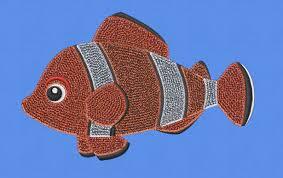10 Common Mistakes in Chenille Digitizing (And How to Avoid Them)

Strong 8k brings an ultra-HD IPTV experience to your living room and your pocket.
Introduction to Chenille Digitizing
Chenille digitizing is more than just converting artwork into stitches. It’s an art that blends texture, density, and stitch types to create bold, eye-catching embroidery. From varsity jackets to custom patches, chenille gives designs a plush, 3D effect that embroidery lovers admire. But when done poorly, the results can look messy and unprofessional.
Let’s face it. Even the most seasoned embroiderers make mistakes with chenille digitizing. The good news? You can avoid most of them with the right techniques.
Why Quality Matters in Chenille Embroidery
Chenille is different from flat embroidery. It’s bolder, thicker, and demands attention. That’s why small mistakes in your digitizing process show up in a big way. Missed paths, poor stitch types, or incorrect density can ruin the design's texture and feel.
A high-quality chenille digitizing file ensures smoother production, better stitch-outs, and a professional finish that sets your brand apart.
Mistake 1: Ignoring the Fabric Type
Not all fabrics play nice with chenille. Some stretch. Some are too thin. Others shed too much.
How Fabric Affects Chenille Stitching
Chenille is best on thick, stable materials like felt, fleece, or heavy cotton. Using delicate or unstable fabrics can lead to puckering, uneven stitching, or excessive pull. Always digitize with your fabric type in mind to ensure the final result holds its shape.
Mistake 2: Choosing the Wrong Stitch Type
Chenille isn’t just one stitch. It has options. The two main ones are chain stitch and moss stitch, and choosing the wrong one can wreck your look.
When to Use Chain vs Moss Stitch
Chain stitch gives a clean, tight loop, great for outlines and fine detail. Moss stitch, on the other hand, offers a fluffy, bold texture perfect for fills and large letters. Know your purpose, and pick the right tool for the job.
Mistake 3: Poor Underlay Settings
Skipping underlay is like building a house without a foundation. It’s just not going to hold up.
Stabilizing the Base for Better Results
The right underlay keeps your top stitches stable and prevents fabric shifting. For chenille, always use a strong base stitch like a zigzag or double run to give your texture something solid to sit on.
Mistake 4: Incorrect Density Settings
Too dense and your design becomes stiff. Too loose and it looks patchy.
Balancing Coverage and Texture
Chenille thrives on balance. You want enough density to get that plush look, but not so much that your machine chokes. Start with standard density settings, then tweak based on your fabric and thread.
Mistake 5: Overlooking Lettering Details
Tiny letters might look great on screen but end up as a tangled mess in reality.
Making Letters Look Crisp and Clean
Stick to bold, block fonts for chenille. Avoid scripts or intricate fonts. And always test your lettering to make sure it remains legible at stitch size.
Mistake 6: Not Using Layered Colors Properly
Layering chenille is a technique that can create depth, but it needs precision.
Avoiding Bleeding and Misalignment
When stacking colors, poor digitizing can cause bleeding, misregistration, or uneven finishes. Use clean paths and set adequate spacing between color transitions to keep it sharp.
Mistake 7: Lack of Attention to Digitized Logos
Chenille digitizing works wonders on logos, but it also exposes flaws if you’re careless.
Why Logo Placement and Detail Matter
Digitized logos should be simplified for chenille. That means fewer fine details and more focus on bold shapes. If you’re digitizing for a business or team, it’s essential to maintain brand integrity. Make sure every logo component is crisp and readable. This is especially true if you're working on high-impact digitized logos that represent a brand’s identity.
Mistake 8: Inadequate Pathing and Sequencing
Chenille machines follow a stitch path. If your sequence is messy, so is the final piece.
Preventing Thread Breaks and Jump Stitches
Plan your stitch order with logic. Minimize jump stitches and reduce unnecessary stops. Smart pathing makes the production process smoother and cuts down on thread breaks.
Mistake 9: Neglecting Test Runs
Skipping a test run is like printing without proofreading. You’re asking for errors.
What You Learn from Trial Runs
Always run a test on a similar fabric before going into full production. It helps you spot density issues, thread problems, and alignment mishaps before it’s too late.
Mistake 10: Using Outdated Software or Techniques
Technology evolves fast. So should your tools.
Stay Updated for Better Chenille Digitizing
Old software may lack the precision chenille demands. Use up-to-date digitizing software with chenille-specific features. Learn new techniques and stay ahead of the curve to improve your designs.
Pro Tips to Avoid These Mistakes
- Always match your stitch type to the design style
- Use test swatches on production fabric
- Keep your lettering bold and your spacing consistent
- Simplify logos to emphasize contrast and clarity
- Keep up with software updates and trends
Conclusion
Chenille digitizing is a beautiful blend of creativity and precision. When done right, it creates vibrant, textured designs that stand out. But small errors can quickly add up and turn a good idea into a production nightmare.
By understanding these common mistakes and how to avoid them, you’ll be on your way to creating chenille embroidery that’s both stunning and professional. Take the time to test, tweak, and refine. Your designs—and your clients—will thank you.
FAQs
What is the ideal stitch length for chenille?
A good starting point is around 1.5 to 2.5 mm for chain stitch and slightly shorter for moss. Always test based on your fabric and design.
Can I digitize chenille designs on regular embroidery software?
Some regular software may support basic chenille functions, but it’s best to use tools specifically made for chenille digitizing to get better control over stitch types and textures.
How do I improve the quality of digitized logos in chenille?
Simplify the design, avoid small details, and focus on clean lines. It also helps to use software that allows precise control over stitch paths.
What thread types work best for chenille embroidery?
Acrylic threads are commonly used for their durability and loft. Always match thread type with the design’s end use and fabric.
Is chenille digitizing suitable for small text?
No, chenille is best for bold, large text. Small text tends to lose clarity and looks messy. Stick to block fonts for best results.
Note: IndiBlogHub features both user-submitted and editorial content. We do not verify third-party contributions. Read our Disclaimer and Privacy Policyfor details.



